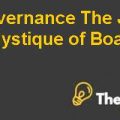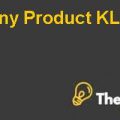
Zara, IT for Fast Fashion Case Solution
BACKGROUND:
Sanchez isthe technical lead for the POS system and Salgado is the head of IT for Inditex, which is a multinational clothing retailer and manufacturer in La Coruna, which is a coastal city in the country of Spain. They are holding a discussion at a restaurant arguing about the sustainability of the current operating system with Sanchez endorsing the current DOS system while Salgado backing up the operating system with Graphical User Interface and aligned with state-of-the-art technology.
This is the source of contention between the two managers, which stimulates the argument. The status quo is that the employees handling the IT are faced with outmoded technology and use floppy disks in order to carry their data from one place to another which is a mechanical process and needs proper networking and automation, whereas the DOS system is also informed by the vendors as outmoded and outdated and does not cater to or improve upon toward fulfillment of certain needs.
Despite this apparent shortcoming, Zara store has an exemplary and unique supply chain that needs to be emulated by other supply chains around Europe and elsewhere. The case dispenses with the description of the value chain and concentrating on its operations and IT infrastructure.
UPGRADATION OF ZARA’S POS SYSTEM:
Zara’s POS System should be upgraded and I would suggest the same to Salgado that he should pursue the up gradation of Zara’s IT infrastructure. The status quo will harm the company as well. One disadvantage to Sanchez’s request to maintain the status quo is that the new hardware in vogue in the market is not compatible and Windows does not support the DOS operating system.
The. benefit to his argument is the fact that there is virtually little cost of DOS concomitant with the opening of a new store. The sales complaint relating to the malfunctioning of the technology is also less. The process also becomes simpler with DOS as all the sales personnel need to do is to insert the floppy drive into the computer, plug a modem into a phone line, and continue their operations.
However, another disadvantage would be that the store owners would like to view the inventory balances of their stores and other’s stores.For the long term the company should aim for automation by keeping this need in mind, however it should not remain in the status quo since canvassing for clothes while doing the physical audit is onerous for the company and not a revenue-earning prospect for the company while giving up conventional method of canvassing.
On the other hand, latest technology will help the organization as the store desperately needs a system that monitors and accesses the inventory levels of their stores and the other stores (Forbes, n.d). Also, networking requirements are necessarily to expedite the process of supply chain. These factors are becoming a problem for the organization and I think investing in such technologies will not harm the company, keeping in mind excellent financials and above par profit margins earned by the company, as compared to other retailers operating in Spain and France especially, their major countries in which they operate.
There is naturally a high preference for speed and that is the reason why their information flow is decentralized. Salgado is keen to introduce new technological elements in the working of Zara.
He is been a member of technological steering committee and discusses ways with the CEO to computerize the whole system of organizational structure. Lastly, in-store network is necessary as it leads to enhanced coordination of the various coordinating efforts relating to the efficient and timely availability of the products, thus enhancing the supply chain of the company..................
This is just a sample partial case solution. Please place the order on the website to order your own originally done case solution.












